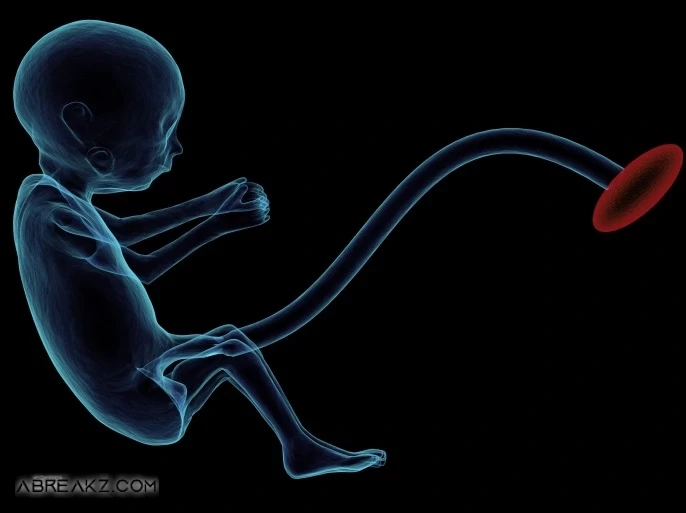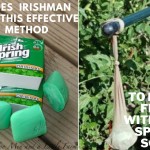Blood-forming stem cells obtained from umbilical cord blood are primary cells found mainly in the bone marrow, and they are able to develop into the three types of blood cells: red blood cells, white blood cells, and platelets. The umbilical cord can form other types of body cells.
Why is Umbilical cord blood so valuable?
Stem cell storage from the umbilical cord blood A technique based on taking the blood present in the umbilical cord of the fetus and storing it in a bank, so that the stem cells in it are used in the future for research or treatment.
The concept of storing umbilical cord blood cells is based on the fact that these cells contain stem cells that can be used in therapy or research.
Stem cells (or root, primary, primary, or progenitor cells) are cells that have the ability to divide, multiply and renew themselves, and are capable of forming an adult cell, and their importance comes from their ability to form any type of specialized cell; As muscle cells, liver cells, nerve cells and skin cells, so they can be used in treatment.
Stem cells are considered the building blocks of the body. They are cells that have an unlimited ability to divide and multiply, and they can differentiate and transform into any type of cell, such as muscle, nerve or bone marrow.
A stem cell divides to give new cells, and these cells either remain a stem like the mother cell, or differentiate to become a cell with specific characteristics, such as a nerve cell or a cardiomyocyte. Among the cells of the body, the only cells that have this ability are stem cells.
Doctors can obtain stem cells from several sources; Including the embryonic cells that are produced five days after the fertilization of the egg in the laboratory, and this type of cell is used only in the treatment of eye diseases such as macular degeneration, bone marrow in adults, and the umbilical cord in the fetus.
What is the storage of umbilical cord blood?
The concept of storing umbilical cord blood cells is based on the fact that they contain stem cells that can be used in treatment or research

Umbilical cord blood cure autism
Current scientific data indicate that stem cells from umbilical cord blood can be used in the treatment of certain cases of leukemia (cancer of white blood cells); After these cases are treated with chemotherapy and radiation, the bone marrow cells have been completely eliminated, and the body needs cells to produce new bone marrow, and stem cells can be used as a source.
Although this treatment option is a good alternative to the transfer of bone marrow cells from another donor, it has not been proven so far the success of stem cells from umbilical cord blood in the treatment of other diseases.
Cord blood banks are divided into two types:
Public banks: affiliated with governmental or research institutions or universities, as parents donate cord blood for research on stem cells, and after donating blood, parents cannot obtain it in the future or use it for personal treatment, and these banks are free, and the mother is usually asked to give birth in A hospital affiliated with the research institution to take the umbilical cord immediately after birth by the specialized experts of the institution.
Private banks: They are private cord blood cell banks, in which stem cells from a person’s cord blood are stored and kept in his name, and these cells are available to him, where he can obtain them in the future when he wants, for the treatment of a family member, for example. This service is provided for a specified amount that includes the expenses of collecting and storing the sample over subsequent years.
On the other hand, there are criticisms of the technique of storing stem cells from umbilical cord blood, including:
The amount of stem cells he gets from the umbilical cord is not enough for treatment.
The results of studies that say this technique works have flaws, and it's unclear how the treatment might help.
Rapid progress in obtaining stem cells from adults may render cord blood storage useless, as stem cells may be obtained from an affected child at any time for use in their treatment.
Umbilical cord blood cure lupus
Scientists rely on stem cells and their research as a future treatment for many diseases, due to their biological and regenerative properties. The storage of stem cells from cord blood is a technology that may hold hope in treating some diseases, although it has been subjected to some criticism.
Stem cells are considered the building blocks of the body. They are cells that have an unlimited ability to divide and multiply, and they can differentiate and transform into any type of cell, such as muscle, nerve or bone marrow.
The stem cell divides to give rise to new cells, and these cells either remain a stem like the parent cell, or differentiate to become a cell with specific characteristics, such as a nerve cell or a cardiac muscle cell. Among the cells of the body, the only cells that have this ability are stem cells.
Doctors can obtain stem cells from several sources, including embryonic cells produced five days after fertilization of the egg in the laboratory - and this type of cell is used only in the treatment of eye diseases such as macular degeneration - and bone marrow in adults, and the umbilical cord in the fetus.

Umbilical cord blood save lives
New technology
The storage of stem cells from the umbilical cord blood is a new technology based on taking the blood present in the umbilical cord of the fetus and storing it in a bank, so that the stem cells in it are used in the future for research or treatment. These banks are divided into two types, the public ones that follow governmental or research institutions or universities, as the parents donate cord blood for research on stem cells, and after donating blood, the parents cannot obtain it in the future or use it for personal treatment, and these banks are free, and usually The mother is required to give birth in a hospital affiliated with the research institution so that the umbilical cord is taken immediately after birth by the specialized experts of the institution.
The second option is private cord blood cell banks, in which stem cells from a person's cord blood are stored and kept in his name, and these cells are available to him where he can obtain them in the future when he wants, for the treatment of a family member, for example. This service is provided for a specified amount that includes the expenses of collecting and storing the sample over subsequent years.
The concept of storing umbilical cord blood cells is based on the fact that these cells contain stem cells that can be used in therapy or research, notes Assistant Professor at Weill Cornell Medical College in Qatar and Dr. Rafea Arash, a molecular oncologist. The current scientific data indicate that it can be used in the treatment of certain cases of leukemia (cancer of the white blood cells). After these cases are treated with chemotherapy and radiation, the bone marrow cells have been completely eliminated, and the body needs cells to produce new bone marrow, and stem cells can be used as a source.
Arash confirms that this treatment option is a good alternative to transferring bone marrow cells from another donor, but he points out that the success of stem cells from umbilical cord blood in treating other diseases such as diabetes has not yet been proven.
Regarding the belief of some opponents of the technology that the stem cells he obtains from the umbilical cord are not sufficient for treatment, the professor answers that it is a possibility, but one of the promising research areas - in which Dr. Arash works - is the multiplication and reproduction of stem cells, and the goal here is to develop methods to multiply the number of Stem cells, and then even if their number in the umbilical cord blood is small, it will be doubled to the required number and used in treatment.
No complications
Regarding the negative effects of technology, the doctor pointed out that there are no complications for the mother or fetus, but he stressed the need to be careful about diseases that can be treated with technology.
Christopher Goodman, CEO of Virgin Health Bank in Qatar - a private bank for storing stem cells from umbilical cord blood - explains that stem cells can be stimulated by certain stimuli to differentiate and become specialized cells, such as bone marrow or heart. He pointed out that bone marrow transfer is a method used for decades to obtain hematopoietic stem cells for the treatment of leukemia, and the cord blood cell storage technique represents another way to obtain these cells.
Goodman: The storage process includes the collection, processing and cryopreservation of stem cells, where they can be used later for general research or for personal treatment, Goodman points out that one of the future possibilities of stem cells is to use them in the development of whole organs such as the liver or pancreas for organ transplants, especially since the number of patients waiting on transplant lists far exceeds the number of organ donors.
Future treatments
According to Goodman, future treatments may include Parkinson's disease, spinal cord injury, heart disease, burns, diabetes, arthritis and amyotrophic sclerosis.
Goodman says that the storage process includes the collection, processing and cryopreservation of stem cells, which can later be used for general research or personal treatment.
Goodman confirms that there are recommendations regarding the number of stem cells needed to treat diseases, as one unit of umbilical cord blood is usually sufficient to treat a child, while a young person needs a larger amount of them to treat him. Two samples of stem cells can also be combined to treat one patient.
Goodman points out that the treatment of leukemia using stem cells from the umbilical cord blood has been applied since the late eighties of the last century, where the cells of the same infected person can be used in some cases, while in others the stem cells must be from another person.
Regarding the same procedure, Goodman points out that the process of taking umbilical cord blood takes place immediately after the birth of the fetus and before the placenta descends, stressing that it does not cause pain or distress for the mother or the newborn, as it can be done whether the birth is natural or Caesarean section.
And about the Virgin Health Bank, Goodman explains that it is a company specialized in collecting and storing stem cells from umbilical cord blood, and it is a private bank, operating in Qatar under a license from the Supreme Council of Health, and it also has a license from the Human Tissue Authority in the United Kingdom.

Umbilical cord in blood clot & vessel
In the Moroccan city of Marrakesh, the first cord blood bank is based on extracting stem cells from cord blood in order to fight cancer. This came in a statement issued by the Mohammed VI Hospital Center in Marrakesh.
The Clinical Research Center of the Marrakech Hospital Center, the bank collects stem cells after taking the blood of the placentas, which were often discarded.
He explained to Anadolu Agency that the placenta blood is rich in stem cells that are tested and analyzed and kept in a safe place, for use by a patient who meets the conditions for matching characteristics.
He pointed out that the opening of the first cord blood bank in Morocco aims to fight cancer.
He pointed out that only a third of patients are able to have a bone marrow transplant when the characteristics match that of a family member.
He stressed that the annual high number of births inside the hospital, which amounts to 16,000, will increase the number of stored grafts.
This medical achievement is a sign of hope for many patients who suffer from various types of cancer, such as leukemia, lymphoma, and nerve, in addition to other non-cancerous diseases.
And storing stem cells from the umbilical cord blood is a technique based on taking the blood present in the umbilical cord of the fetus and storing it in a bank, so that the stem cells in it are used in the future for research or treatment.
Stem cells are the basic building blocks of the body, and they are cells that have an unlimited ability to divide and multiply, and they can differentiate and transform into any type of cell, such as muscle, nerve or bone marrow.
A stem cell divides to give new cells, and these cells either remain a stem like the parent cell, or differentiate into a cell with specific characteristics, such as a nerve cell or a cardiac muscle cell. Among the cells of the body, the only cells that have this ability are stem cells.
Doctors can obtain stem cells from several sources, including embryonic cells produced five days after fertilization of an egg in the laboratory, bone marrow in adults, and the umbilical cord of the fetus.

Umbilical cord blood banking nhs
America allows cord blood to be injected into patients from abroad
Over the past decade, more than 700 people with traumatic brain injury have received umbilical cord stem cells that were frozen and stored at birth in trials at Duke University Medical Center in North Carolina.
Medical authorities in the United States have now allowed scientists to offer this controversial treatment to families around the world.
Proponents say some patients' symptoms have improved, while critics say the results are flawed, and it's not clear how the treatment can help.
Parents pay about $2,760 to store blood from the newborn's umbilical cord, because it contains stem cells, so that they can be used later in treating the child if it is found that he has certain diseases.
Forms the umbilical cord blood vessels quizlet
In theory, stem cells help heal by stimulating growth or transforming into the desired type of mature cell, and they can then be placed back in the body even decades later, and using stem cells from the same person reduces the possibility of rejection by the body.
Currently, cord blood has been shown to treat a few blood disorders, including leukemia.
And last year, scientists published results showing that some children with autism and cerebral palsy appear to benefit.
However, many doctors are skeptical of this approach, and the rapid progress in obtaining stem cells from adults may render the cord blood storage technique useless, as stem cells may be obtained from an affected child at any time for use in his treatment.
Cord blood baffles American parents
Many American parents are puzzled about storing their newborn's umbilical cord blood in blood banks for future use.
Doctors confirm that umbilical cord blood can treat diseases such as leukemia and other blood diseases when bone marrow transfer is a weak alternative, in addition to other genetic diseases.
As in the usual blood donation operations, the cells of the umbilical cord are examined
To discover which diseases are classified as presented to a patient or used in research. The cells are injected directly into the patient's blood, and when they reach the bone marrow, they produce new blood.
"It's almost miraculous," says Dr. Joseph Antin, who oversees stem cell transplantation and a related donation program at the Dana-Farber Cancer Institute in Boston.
A challenge for parents
In the United States, this progress presents a challenge for parents who want to store blood in private banks for their children or donate it to public banks for others.
But deciding on the fate of cord blood leaves parents in conflict with
A complex issue that is still controversial among scientists and doctors, some of whom consider that the chances of using this blood to treat diseases are very small.
The intense publicity has some doctors worried about parents deciding to spend thousands of dollars on emotional grounds without understanding the limits of cord blood's benefits.
Another concern is that the sample may be small, or that the cells may lose their usefulness years after birth when a child develops one of the many diseases currently being studied.

Umbilical cord blood for stem cells
Many companies
More than 25 companies offer private storage services such as "Via Cell", "Via Cord", "Cord Country Register" and a number of smaller companies.
Stephen Grant, executive vice president of Cord Country Register, says that the annual activity of his company has grown by 60%, with more people taking stock in private companies.
The doctor who supervises the delivery collects the blood in a special container that is sent to companies, and is usually paid for it.
Health insurance does not cover such a process, which costs between 1,700 to 2,500 dollars paid in advance, along with annual expenses between 115 and 200 dollars.
Earlier this year, the American Academy of Pediatrics reported that
Storage should be limited to families with an older sick child who can benefit
of this blood.
More than 50,000 public samples are available, and federal officials are seeking to make 150,000 available through a nationwide registration process.
Umbilical Cord Blood For Hiv & Cerebral Palsy
Fetal treatment
And while it's still too early to tell if this operation will ever be successful, infant Ileana and her mother, Nichelle Obar, were the first two patients to push the boundaries of fetal therapy, a field already known to be attractive.
If successful, the report adds, this treatment could open the door to the use of prenatal bone marrow transplants not only to treat Ileana disease, but also to treat sickle cell anemia, hemophilia and other genetic disorders, some of which are considered so severe that prenatal diagnosis may lead parents to Termination of pregnancy.
Bone marrow is considered a potential treatment because it is teeming with stem cells that can create replacements for lost or defective cells as a result of embryonic defects.
Pediatric and fetal surgeon Dr. Tippi Mackenzie says this work moves the field of fetal surgery, which currently consists of large operations for anatomical disorders, into a new direction for non-surgical molecular and cellular therapies.
Dr. McKenzie is leading this pioneering study at UCSD Benioff Children's Hospital in San Francisco.
While Eliana still needs a blood transfusion every three weeks, she also needs a new bone marrow transplant at a later stage.
As for the girl's parents, her mother Ubar, 40, and her father, Chris Constantino, 37, they are in good health, but they learned during the first pregnancy that they had hereditary thalassemia.







































